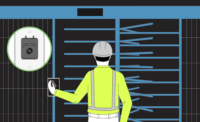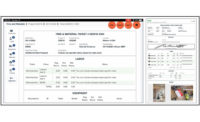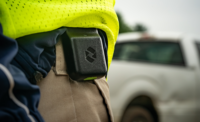Getting construction workers to put on yet another piece of wearable technology can be an uphill battle, so it’s often better to improve something they already use. That was the reasoning behind the VisionVest, an upgraded safety vest that has built-in LED lighting, phone charging and GPS location tracking.
“It was key for us to keep it simple,” says Allison Swank, president and founder of VisionVest. “We get that there’s a bias in the field against new things, so we wanted to get it in with as little change as possible to workers’ daily routines.”
Based on the standard safety vest, the VisionVest features an integrated battery pack to power its ribbon-style LED lights, a pouch for a water bottle to keep workers hydrated, and a GPS unit that can report the wearer’s location on site. The vest has undergone testing on real sites, and a version of it is about to be deployed with a highway crew working on a stretch of Interstate 376 in downtown Pittsburgh.
The models being deployed today are based around the added safety of the LED lighting package, but the GPS component will not be included, for now. “The focus of the vest has always been on safety,” says Swank. She says that while work crews in trial deployments were excited by the lighting and phone-charging capabilities of the vest, they bristled at the idea of full GPS tracking of their movements on site. “While we did get some concerns about the whole Big Brother aspect of being tracked, we also heard from owners who were concerned about liability,” she tells ENR. “If you track someone’s unsafe behavior and see in real time they are somewhere they shouldn’t be, are you then responsible if something happens?”
But Swank says the potential benefits outweigh the negatives, and she’s continuing to pursue the development of the GPS component. Currently, it allows for worker locations to be viewed in a web-based portal, with individual workers’ hours and locations all tracked. Geo-fenced areas of the site can track how long workers spend in an area, or how many of a particular trade are working in an area. Swank envisions this information eventually being exported to scheduling and cost-management systems, offering insights about workers on the jobsite to the back office as well.
“Project managers want to be able to know at a glance before the owner calls how many workers are on site,” she says. “With the GPS, they can say how many of each trade are in a geo-fenced area and get a sense of what’s going on.”
According to Swank, the VisionVest meets ANSI standards for safety vests. A commercially available version of the VisionVest is due later this year.






Post a comment to this article
Report Abusive Comment